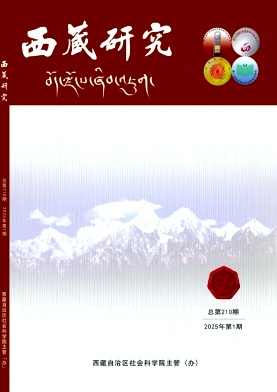| 392 | 4 | 5 |
| 下载次数 | 被引频次 | 阅读次数 |
旅游餐饮与一般餐饮相比,既有共性又有个性,它以游客为主要用餐群体,同时受到旅游活动的异地性、审美性、信息性等因素影响。以拉萨玛吉阿米餐厅为例,借助ROST、Ucinet和SPSS软件,对网络评论文本进行内容分析。通过高频词和社会网络分析挖掘游客的感知热点,并通过聚类分析归纳游客感知的核心,使用情感分析辅助验证。以期拓展旅游6要素中旅游餐饮研究的内容与深度,为旅游餐饮业的发展提供参考。
Abstract:Tourism food has the same nature as general catering,but also possesses some unique features.The majority of its customers are tourists,and it's affected by allopatry,aesthetic and informativity of tourism activities. Tourists' perception of Makye Ame Tibetan restaurant has been studied by analyzing its web critics with ROST,Ucinet and SPSS. Tourists' perception has been explored through word frequency and social network analysis,and the core of perception has been determined by cluster analysis,validated with emotion analysis. The results demonstrate that the perception of tourism food can be categorized into several aspects: the local cultural landscape; the cultural theme of the restaurant; the food and quality of service and the interactive experience among tourists. These results could increase the depth and scope of study on tourism food,which is one of the six key factors of tourism,and provide a reference for the development of tourism catering industry.
[1]蔡晓梅,刘晨.人文地理学视角下的国外饮食文化研究进展[J].人文地理,2013,28(5).
[2]Hall C M,Sharples L.Food and wine festivals and events around the world[J].Test,2007(1).
[3]Belisle F J.Tourism and food production in the Caribbean[J].Annals of tourism research,1983,10(4).
[4]Telfer D J,Wall G.Linkages between tourism and food production[J].Annals of tourism research,1996,23(3).
[5]Reuland R,Choudry J,Fagel A.Research in the field of hospitality[J].International journal of hospitality management,1985,4(4).
[6]Czepiel J A,Solomon M R,Surprenant C F,et al.Service encounters:an overview[J].The service encounter,1985.
[7]Chang R C Y,Kivela J,Mak A H N.Food preferences of Chinese tourists[J].Annals of tourism research,2010,37(4).
[8]Divisekera S.Economics of tourist’s consumption behavior:some evidence from Australia[J].Tourism management,2010,31(5).
[9]Horng J S,Tsai C T.Government web-sites for promoting East Asian culinary tourism:a cross-national analysis[J].Tourism management,2010,31(1).
[10]Boniface P.Tasting Tourism:Traveling for Food and Drink[M].Burlington:Ashgate Publishing,2003.
[11]Mak A H N,Lumbers M,Eves A.Globalisation and food consumption in tourism[J].Annals of tourism research,2012,39(1).
[12]Cohen E,Avieli N.Food in tourism:attraction and impediment[J].Annals of tourism research,2004,31(4).
[13]蔡晓梅,朱,刘晨.顾客对情境主题餐厅表演的感知研究-以广州味道云南食府为例[J].人文地理,2012,27(1).
[14]Yang Y,Wu M Z,Cui L.Integration of three visualization method based on co-word analysis[J].Scientometrics,2012,90(2).
[15]李佳.共词矩阵在聚类结果分析中的作用[J].中华医学图书情报杂志,2009,18(4).
[16]周尚意,吴莉萍,苑伟超.景观表征权力与地方文化演替的关系:以北京前门——大栅栏商业区景观改造为例[J].人文地理,2010(5),25.
[17]Mitchell D.Cultural Geography:A Critical Introduction[M].Oxford:Blackwell,2000:137.
[18]索南才让.藏族宗教文化的神圣性与象征性特点[J].西藏研究,2013,2(4).
[19]Su M M,Wall G.The Qinghai-Tibet railway and Tibetan tourism:travelers perspectives[J].Tourism management,2009,30(5).
[20]郑震.空间:一个社会学的概念[J].社会学研究,2010(5).
[21]Certeau D.The Practice of Everyday Life[M].California:University of California Press,1988:92.
[22]Low S M,Lawrence-Zuniga D.The Anthropology of Space and Place[M].Oxford:Blackwell Publishing Ltd,2004:1.
[23]曾国军,吴炎珂.饮食文化空间的符号化生产:广州主题餐厅的案例[J].华南师范大学学报(社会科学版),2015(2).
[24]马罛炜.文化符号的建构与解读——关于哈尼族民俗旅游开发的人类学考察[J].民族研究,2006(5).
[25]Tellstrom R,Gustafasson I B,Mossberg L.Consuming heritage:the use of local food culture in branding[J].Place branding and public diplomacy,2006,2(2).
[26]Namkung Y,Jang S C.Does food quality really matter in restaurants?Its impact on customer satisfaction and behavioral intentions[J].Journal of hospitality&tourism research,2007,31(3).
[27]Sulek J M,Hensley R L.The relative importance of food,atmosphere,and fairness of wait:the case of a full-service restaurant[J].Cornell hotel and restaurant administration quarterly,2004,45(3).
[28]蒋婷,胡正明.服务接触中游客间互动行为研究——基于关键事件技术的方法[J].旅游学刊,2011,26(5).
基本信息:
DOI:
中图分类号:C913.3
引用信息:
[1]庞玮,陈立明.入藏旅游者餐饮感知评价研究——以拉萨玛吉阿米餐厅为例[J].西藏研究,2017,No.166(06):80-88.
基金信息:
国家社科基金项目“西藏边疆人口较少民族聚居区经济社会发展现状调查研究”(项目编号:14BMZ040)的阶段性成果
